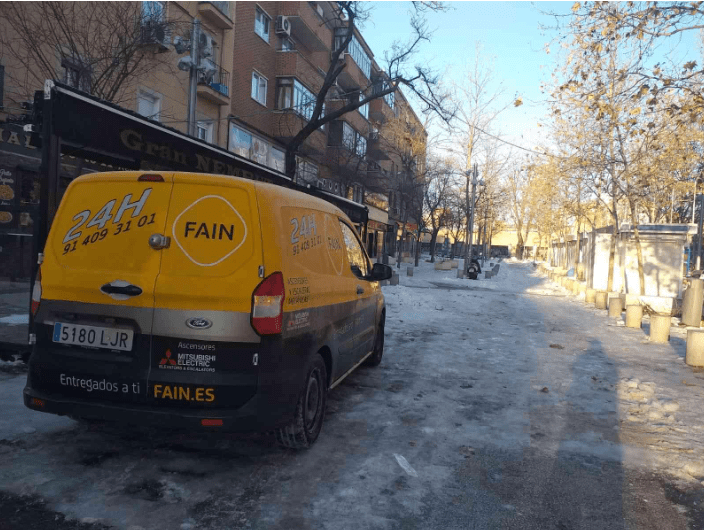Although lifts are highly reliable and extremely durable devices, they are no exception: lifts are also affected by the cold.
It is important to keep in mind that even if the lift cab is indoors, in most installations the basic components are on the roof of a building, where they are exposed to large temperature swings and inclement weather.
Do you know how a heavy winter storm can influence your lift? What types of problems can it cause? Can they be avoided? If you want answers to these questions, we suggest you read this post all the way to the end!
How can cold weather affect a lift?
One of the most common incidents involves lubricated parts of the lift, such as locks, retractable cams, diverting pulleys, brake systems or the hydraulic unit of a hydraulic lift.
Cold causes a physical process that turns the oil, or grease, into a homogeneous substance, making it harden, which results in parts sticking.
As the temperature drops, the lubricant dries and creates friction between moving parts. This causes annoying noises and even vibrations in the cab, which can make for an uncomfortable ride.
Beyond the unpleasant sounds, there is significant wear and tear of the cab guide shoes and their couplings, a situation that can lead to entrapment. It is important to ensure that the guides are thoroughly greased along their entire length.
Another type of problem affects lifts with semi-automatic doors: with the cold, the oil in the hydraulic damper thickens, keeping the doors from closing properly. This situation leads to service calls. The solution is to replace the dampers on doors or switch to automatic doors, although the latter requires more of an investment, and sometimes construction work and a longer execution time.
The cold, cause of mislevelling problems in lifts
Mislevelling problems caused by the cold occur in both hydraulic lifts and two-speed electric lifts.
In the case of the former, the oil in the pump thickens when there are sudden changes in temperature, which causes bouncing and stops.
In electrical lifts, the main problem lies in the brakes: with the cold, they tend to freeze, as do brake pads and motors, causing not only mislevelling, but potential entrapments in the top of the lift and the bottom of the shaft. This last aspect can be solved by installing a variable drive unit in the system.
The cold also affects the batteries of single-phase devices, causing problems in low-voltage energy regeneration systems – a common occurrence in winter.
Emergency lights and telephone batteries can also be affected by the cold, so much so that they may have to be replaced. To minimise risks, these batteries should be covered with an insulating material to more effectively protect them.

How to avoid problems caused by cold weather in your lifts
As we will see below, there are multiple prevention measures to keep the cold from damaging a lift.
Some of them have to be implemented in the months prior to the coldest days of the year; Such is the case with space heaters, which keep the machine room at a stable temperature, or lubricating the locks on the lift to prevent seizing.
The use of lubricating pulleys and high-density oil – an effective, albeit more expensive, alternative – will also help to protect the lift in a residential building or home from inclement weather.
Automatic greasing systems installed in the chassis help maintain constant lubrication and protect the components from low temperatures.
To find out more, contact us!
We hope we answered all your questions about the different problems that low temperatures can create for a lift.
Don’t hesitate to contact our technicians and/or sales representatives to check if your lift needs some kind of weatherproofing to prevent problems and breakdowns caused by the cold; they will give you a report and a budget as soon as possible. Contact us. We’ll be glad to help you!
Basic information on data protection: In accordance with the GDPR and the LOPDGDD, FAIN ASCENSORES S.A. will process the provided data in order to contact you with the information you need. For more information about the processing of your data and to exercise your rights, please visit our privacy policy



